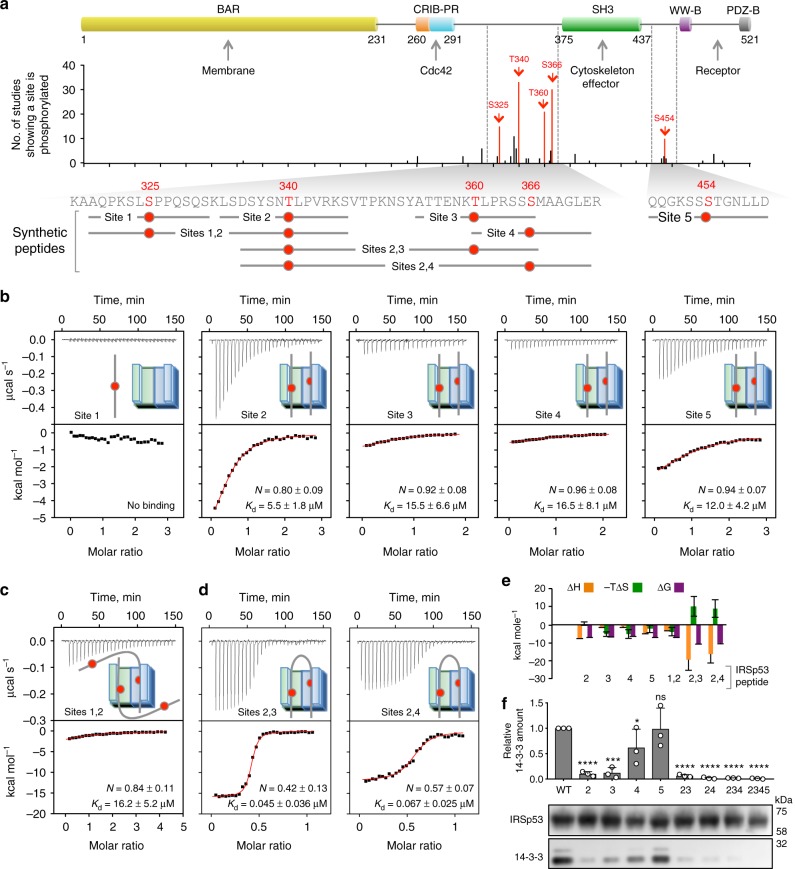Fig. 2.
Characterization of the 14-3-3-binding sites of pIRSp53. a Domain organization of IRSp53, showing the location of phosphorylation sites and the definition of synthetic phospho-peptides used in this study. In the graph, the height of each phosphorylation site represents the number of times a particular residue has been found to be phosphorylated in phosphoproteomics studies curated by PhosphoSitePlus (www.phosphosite.org). Among these, five sites (highlighted red) were consistently found to be phosphorylated in four different pIRSp53 samples analyzed here (purified as shown in Fig. 1). Note that the five sites identified here coincide with the highest frequency sites in PhosphoSitePlus. b–d ITC titrations of 100 μM singly phosphorylated (Site 1 to 5) or 50 μM doubly-phosphorylated (Sites 1,2; 2,3 and 2,4) peptides into 10 μM 14-3-3θ (as indicated). ITC experiments were performed at 20 °C. Listed for each experiment are the dissociation constant (Kd) and binding stoichiometry (N) derived from fitting of the binding isotherm (red line). Errors correspond to the s.d. of the fits. e Change in thermodynamic parameters ΔH (orange bars), -TΔS (green bars), and ΔG (purple bars), derived from the fits of the ITC titrations shown in panels b–d. Errors correspond to the s.d. of the fits. f Coimmunoprecipitation of 14-3-3 with WT IRSp53-FLAG and mutants carrying S/T- > A substitutions of the indicated phosphorylation sites (named according to the number of the five major phosphorylation sites shown in part a). Abundance is reported relative to the amount of endogenous 14-3-3 that coimmunoprecipitates with WT IRSp53-FLAG in serum-starved cells (first column). Error bars are ± s.d. from three independent experiments, shown as open circles. The statistical significance of the measurements was determined using an unpaired two-sided Student’s t-test, comparing each of the mutants to WT IRSp53 (ns, non-significant; *p < 0.05; ***p < 0.001; ****p < 0.0001)

